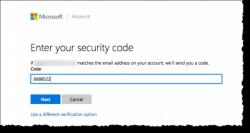What are the features of a function generator?
A function generator is a versatile electronic test instrument used in various fields, including electronics, engineering, and physics, to generate different types of electrical waveforms for testing and experimentation. The features of a function generator can vary depending on the specific model and manufacturer, but here are some common features and capabilities you might find in a typical function generator:
Waveform Generation: Function generators can produce a variety of waveforms, including:
- Sine Wave: A smooth, continuous wave with a single frequency.
- Square Wave: A waveform that alternates between two voltage levels, typically 0V and a positive value, with a fixed duty cycle.
- Triangle Wave: A waveform that linearly ramps up and down between two voltage levels.
- Ramp Wave: Similar to a triangle wave but with an adjustable slope.
- Pulse Wave: A waveform with variable pulse width and frequency.
- Arbitrary Waveform: Some advanced function generators can create custom waveforms based on user-defined points.
Frequency Control: Function generators allow you to adjust the frequency of the generated waveform. They typically cover a wide range of frequencies, from a few Hertz (Hz) to several megahertz (MHz) or more.
Amplitude Control: You can adjust the amplitude (voltage) of the output waveform. Some function generators offer both peak-to-peak and RMS voltage control.
Duty Cycle Control: For square waveforms, you can typically adjust the duty cycle, which is the ratio of the pulse width to the period.
Phase Shift: Some function generators allow you to introduce a phase shift between two synchronized waveforms.
Modulation: Function generators often include modulation capabilities, such as amplitude modulation (AM), frequency modulation (FM), and pulse width modulation (PWM). These features are useful for testing communication systems and other applications.
Synchronization: Function generators can be synchronized with other test instruments or external signals.
Sweep Function: Many function generators have a sweep function that allows you to sweep the frequency of the output waveform continuously or in steps.
Frequency Counter: Some models include a built-in frequency counter to measure the frequency of external signals.
Display: A digital display or screen shows the settings and output waveform characteristics.
Memory and Storage: Advanced function generators may have internal memory to store and recall custom waveforms and setups.
Output Impedance: The output impedance can often be switched between different values to match the requirements of the connected circuit.
Output Protection: Function generators usually have built-in protection mechanisms to prevent damage to the instrument or connected devices due to overloads or short circuits.
Connectivity: They come with various output connectors, such as BNC or banana jacks, to connect to external circuits.
Remote Control: Some models offer remote control options, including USB, LAN, or GPIB interfaces, for automated testing.
Built-in Function Libraries: Advanced models may include pre-programmed standard waveforms and arbitrary waveform editing capabilities.
The specific features and capabilities of a function generator can vary widely depending on the model and brand. When choosing a function generator, consider your specific testing and experimentation needs to ensure it has the required features and performance characteristics for your applications.
Function generators are versatile instruments that can be used to generate a variety of waveforms, including sine, square, triangle, sawtooth, and pulse waveforms. They are commonly used in electronics testing, research and development, and education.
Here are some of the key features of function generators:
- Waveform type: Function generators can generate a variety of waveform types, including sine, square, triangle, sawtooth, and pulse waveforms.
- Frequency range: Function generators can generate waveforms in a wide range of frequencies, typically from 1 Hz to 10 MHz.
- Amplitude range: Function generators can generate waveforms with a wide range of amplitudes, typically from 1 mV to 10 V.
- Modulation: Function generators can be used to modulate waveforms, such as amplitude modulation (AM) and frequency modulation (FM).
- Sweep: Function generators can be used to sweep the frequency of a waveform over a range of frequencies.
- Trigger: Function generators can be triggered to generate a waveform at a specific point in time.
Function generators are used in a variety of applications, including:
- Electronics testing: Function generators can be used to test the performance of electronic circuits, such as amplifiers, filters, and oscillators.
- Research and development: Function generators can be used to develop new electronic circuits and devices.
- Education: Function generators are commonly used in electronics education to teach students about waveforms and their properties.
In addition to the key features listed above, function generators may also have other features, such as:
- Dual channel: Some function generators have two channels, which allows them to generate two waveforms simultaneously.
- Arbitrary waveform generation: Some function generators can generate arbitrary waveforms, which are waveforms that are not one of the standard waveform types.
- Counter: Some function generators have a built-in counter, which can be used to measure the frequency of an input signal.
When choosing a function generator, it is important to consider the features that you need for your specific application. For example, if you need to generate waveforms in a wide range of frequencies, you will need a function generator with a high frequency range. If you need to modulate waveforms, you will need a function generator with modulation capabilities.
Function generators are a valuable tool for electronics engineers, researchers, and students. By understanding the key features and applications of function generators, you can choose the right function generator for your needs.













